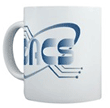Virtual Machine Presentation Follow-up It was a great pleasure having the opportunity to present at the February General Meeting. Only the surface was scratched, and there wasn't much room to get into all the things possible with Virtual computing technology. I thought the group Q&A was great and only find it fitting that I try to expand on some of the questions asked. A member of the audience asked if virtual disks could be set to auto-grow. My answer was that yes it can be done but that I don’t do it because of fragmentation reasons. Basically, you have two options—either the disk file can start out small and expand as needed, or it can be comprised of disk pieces and additional pieces are added as needed. To the virtual machine, the disk pieces would show as a single logical drive, but on the file system of the host computer it would appear as multiple large files. The other reason I favor a single non-expanding disk file is that it’s easier to keep track of. We skated over backups because I felt it would take us too far off topic. Backup strategies are themselves a part of a Disaster Recovery Plan. In any case, both the virtual machine file itself or the data within it can be backed up. What method is used really depends on the importance of needing the virtual machine instance vs. the data within it. The data on a virtual machine can be backed up just as any other computer or server. The virtual disk files that define the virtual machine can also be backed up, but if your primary virtual disk drive is 6GB, then the virtual disk file will be 6GB even if you really only needed to back up 2GB of data. When working with virtual machines, make sure you read the license agreements for the OS(s) and applications that are planned to be loaded. It's one thing to install Windows XP on a virtual machine to play around with a program and then delete the virtual machine within the trial period. It's another thing to build a virtual Windows XP machine for the intent of prolonged use. This is also true of applications installed in the virtual machines. If in doubt, consult the vendor of the application or OS. Isolation and cooperation of the virtual machines to their host and each other is important. Each virtual machine is independent of each other and the host. The host software prevents them from interacting unless they are “logically” connected. In order to network virtual machines, virtual network cards must be assigned to them. Access to external networks has to be allowed and defined on the host computer. This topic can delve much deeper than this and would be better left to an external discussion because it greatly depends on what someone needs or wants to do. Even though the systems are isolated, the risks of virus transversal exist once virtual machines are given access to network and physical drive resources that can be accessed by other physical machines. Each virtual machine should have virus scanning software run on it, as well as the host system. On the host, I exclude the path I have the virtual machines in to maximize performance. I use Avast! on my virtual machines because it’s free and works well. During the presentation we said that programming environments could be tested, a sandbox network could be created, checking out new operating systems, and working with backups. We also mentioned for recovery purposes. All of these were noted as “disposable” purposes. We didn’t mention much about day-to-day use. In my case, on one computer, I have a virtual machine for the Linux SIG and one that is an XP domain member on my home network (which is the one I used for the presentation). Three of my servers at home are virtual machines running across two physical servers. One virtual machine is used as a Symantec Ghost box when I need to image a machine. Lately I’ve been using virtual computing to rebuild some bad diskettes. Years ago I copied the disks into “DISK1, DISK2, DISK3” type folders for archival purposes in case the originals degraded. The virtual machine has allowed me to rebuild the bad disks. So far, I’ve gone through my DOS 6.22 install disks, legacy versions of Windows and Windows for Workgroups, and my old DOS based ‘tools’ diskettes. Due to overwhelming interest, a Virtual Computing SIG has been formed that meets on the 4th Tuesday of every month at 7pm. For more information, contact me at relimbaugh@dacs.org. |
Mugs and more, visit CafePress to order
